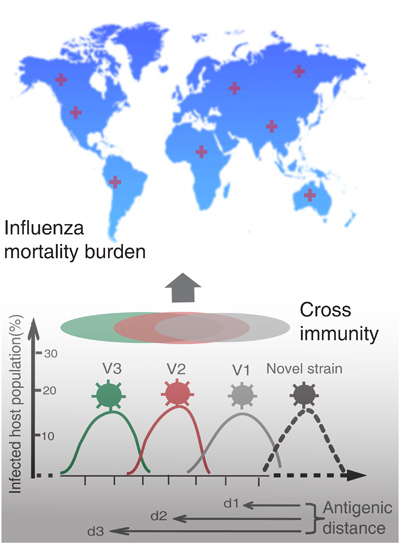Chinese Researchers Developed a New Approach to Assess the Impact of Influenza Virus on Human Death
Seasonal influenza viruses have caused and will continue to cause significant morbidity and mortality with varying magnitude. In epidemiology, investigators usually rely on the surveillance data to assess the impact of an influenza virus on human health. However, accurate assessment of the influenza mortality burden at the early stage of influenza infection is rather challenging, because the early influenza surveillance data are very limited and prone to bias as well. This speaks to an urgent need for the development of a more effective method for rapid and accurate estimation of influenza mortality burden.
A research group led by Dr. Taijiao Jiang from Institute of Biophysics, Chinese Academy of Sciences has recently proposed a novel host-virus interaction model. In the model, the evolution of a human influenza virus, such as A(H1N1), is considered as serial replacements of the viral strains of distinct antigenicity driven by the cross immunity induced by the previous prevalent antigenic strains of same (sub)type in the human population (see Figure below). By using the model, for the first time they have established a quantitative relationship between the antigenic variation of a human influenza virus and its impact on human death. Based on this relationship, they have further developed a method to rapidly assess the mortality burden of influenza A(H1N1) virus by accurately predicting the extent of antigenic variation between A(H1N1) strains. This work was published on August 12, 2010 in PLoS Computational Biology, which arrested the interests of all three peer reviewers, and was regarded as “conceptually novel”. This novel computational model will help health authorities to develop a timely and sensible influenza preparedness programme that balances the gains of public health and the social and economic costs.

Link: http://www.ploscompbiol.org/article/info:doi/10.1371/journal.pcbi.1000882

